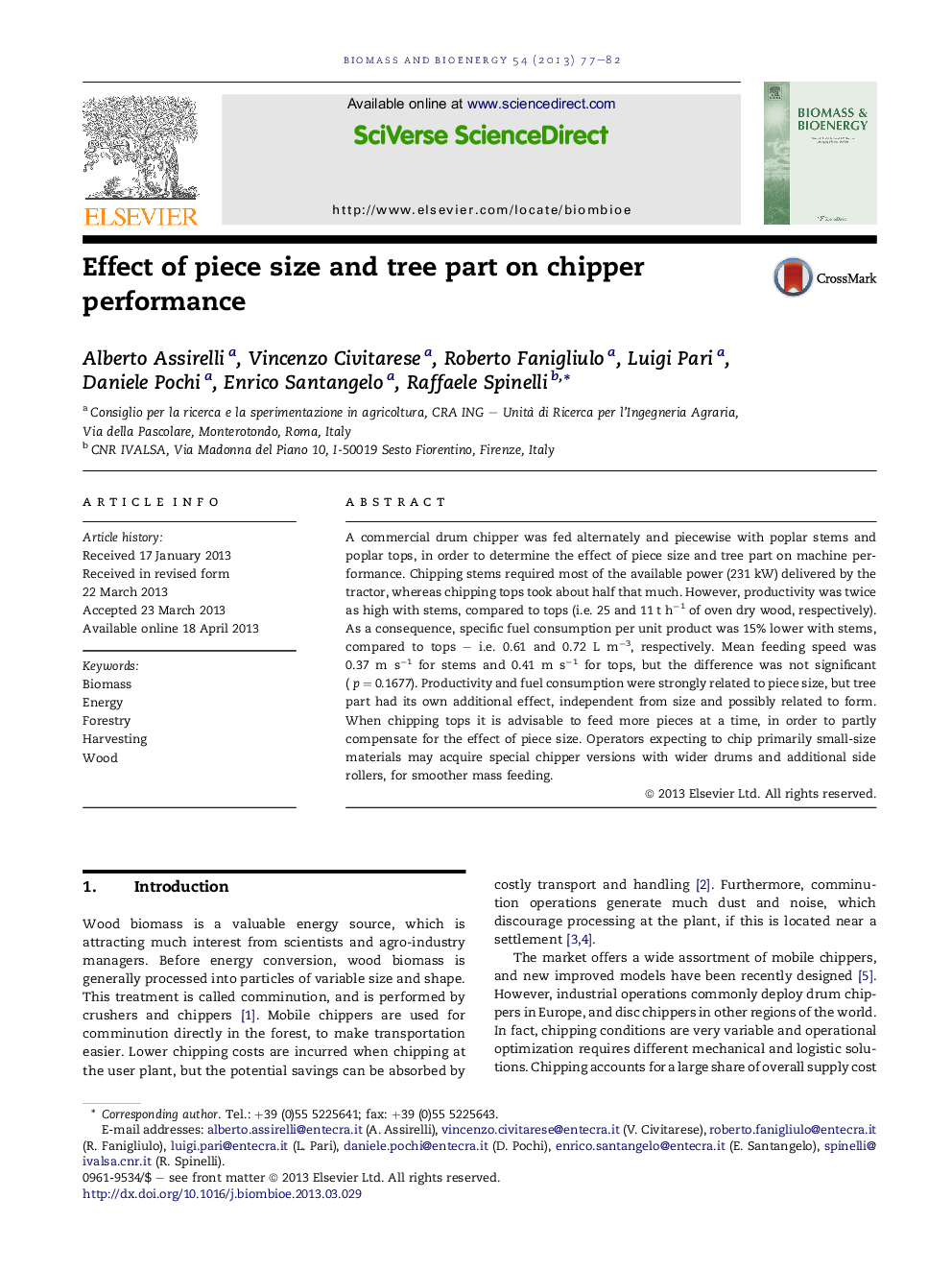| Article ID | Journal | Published Year | Pages | File Type |
|---|---|---|---|---|
| 677106 | Biomass and Bioenergy | 2013 | 6 Pages |
•The same chipper was tested with poplar stems and tops.•Chipping stems resulted in higher productivity and lower fuel consumption.•Chipping stems required most of the available tractor power.•Chip particle size distribution was about the same for both feedstocks.
A commercial drum chipper was fed alternately and piecewise with poplar stems and poplar tops, in order to determine the effect of piece size and tree part on machine performance. Chipping stems required most of the available power (231 kW) delivered by the tractor, whereas chipping tops took about half that much. However, productivity was twice as high with stems, compared to tops (i.e. 25 and 11 t h−1 of oven dry wood, respectively). As a consequence, specific fuel consumption per unit product was 15% lower with stems, compared to tops – i.e. 0.61 and 0.72 L m−3, respectively. Mean feeding speed was 0.37 m s−1 for stems and 0.41 m s−1 for tops, but the difference was not significant (p = 0.1677). Productivity and fuel consumption were strongly related to piece size, but tree part had its own additional effect, independent from size and possibly related to form. When chipping tops it is advisable to feed more pieces at a time, in order to partly compensate for the effect of piece size. Operators expecting to chip primarily small-size materials may acquire special chipper versions with wider drums and additional side rollers, for smoother mass feeding.
